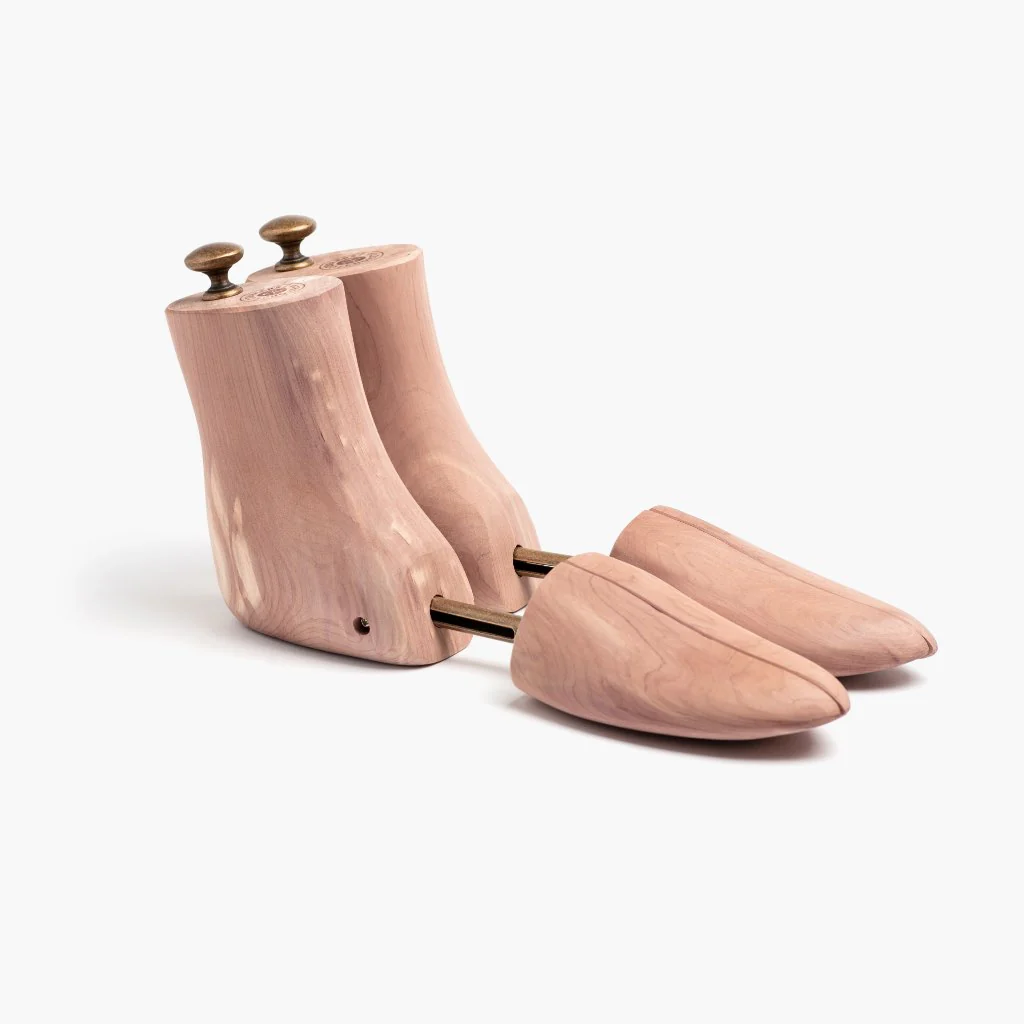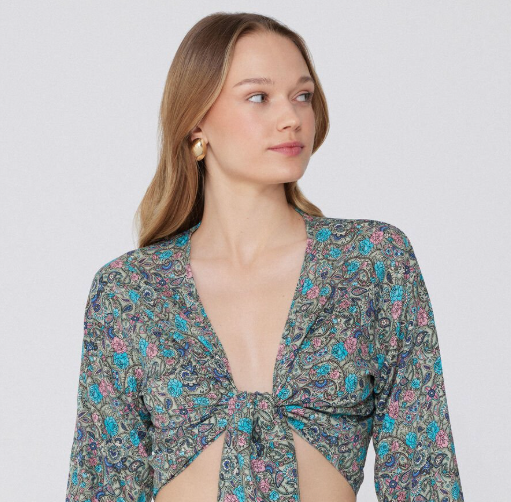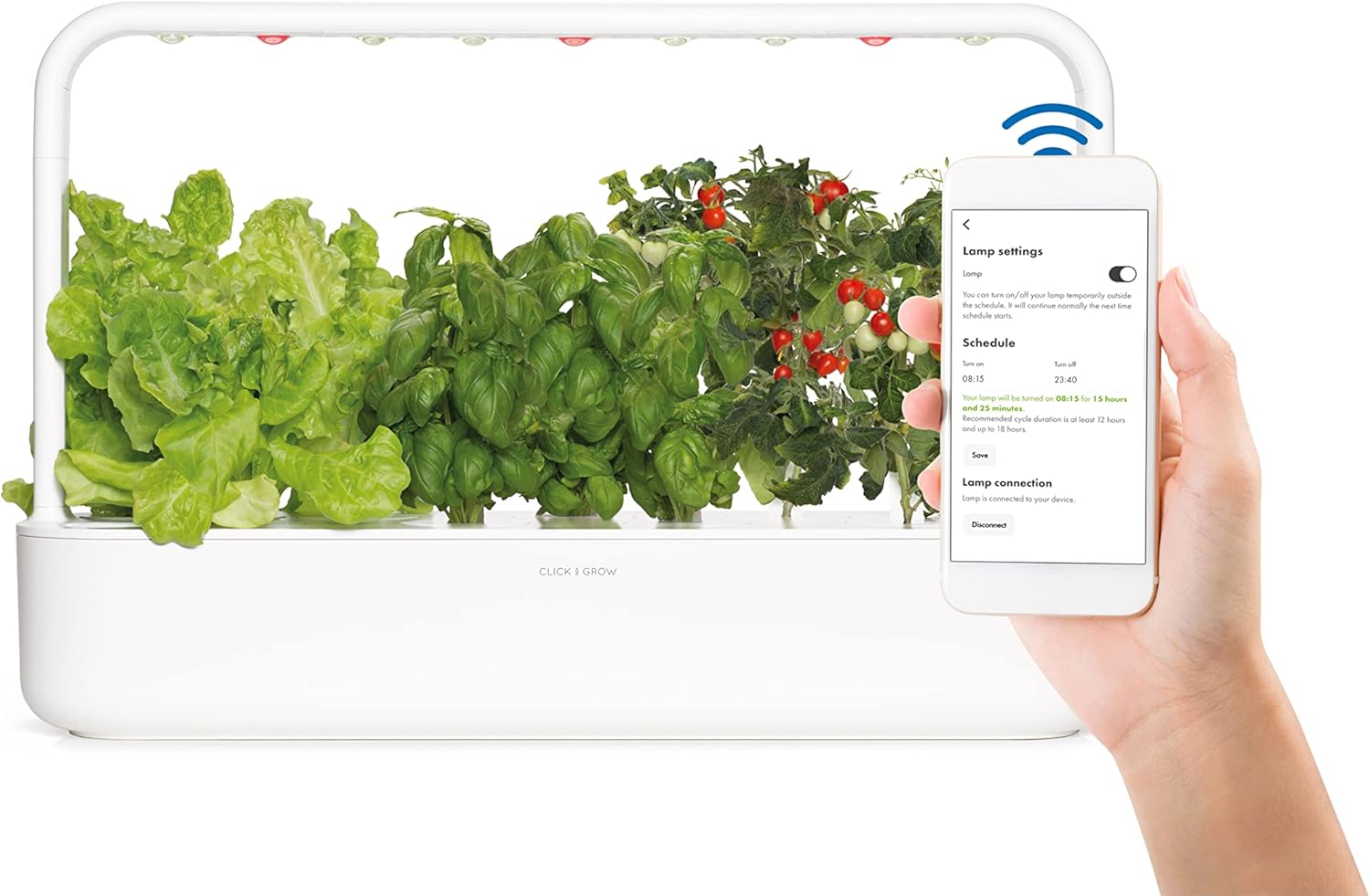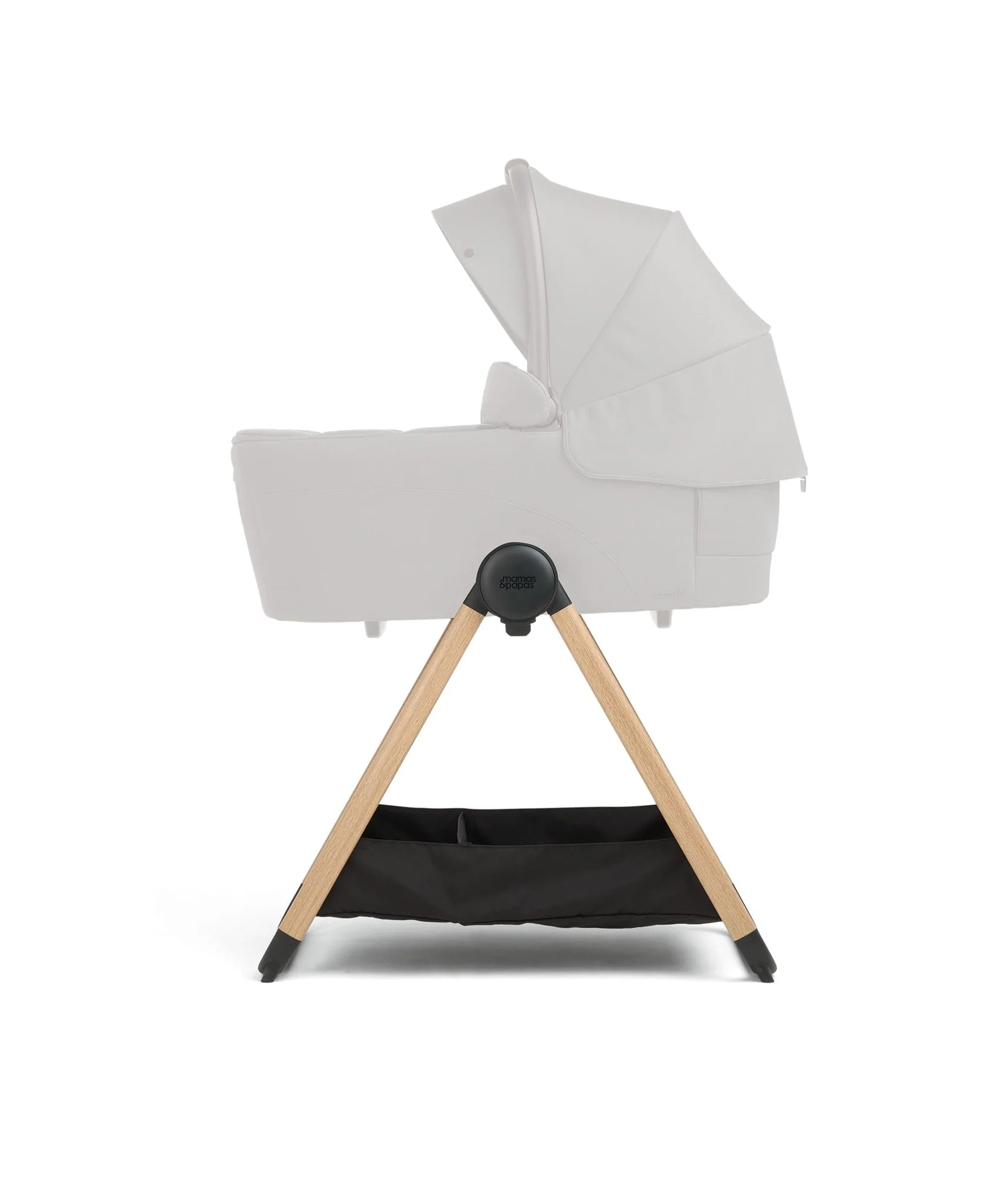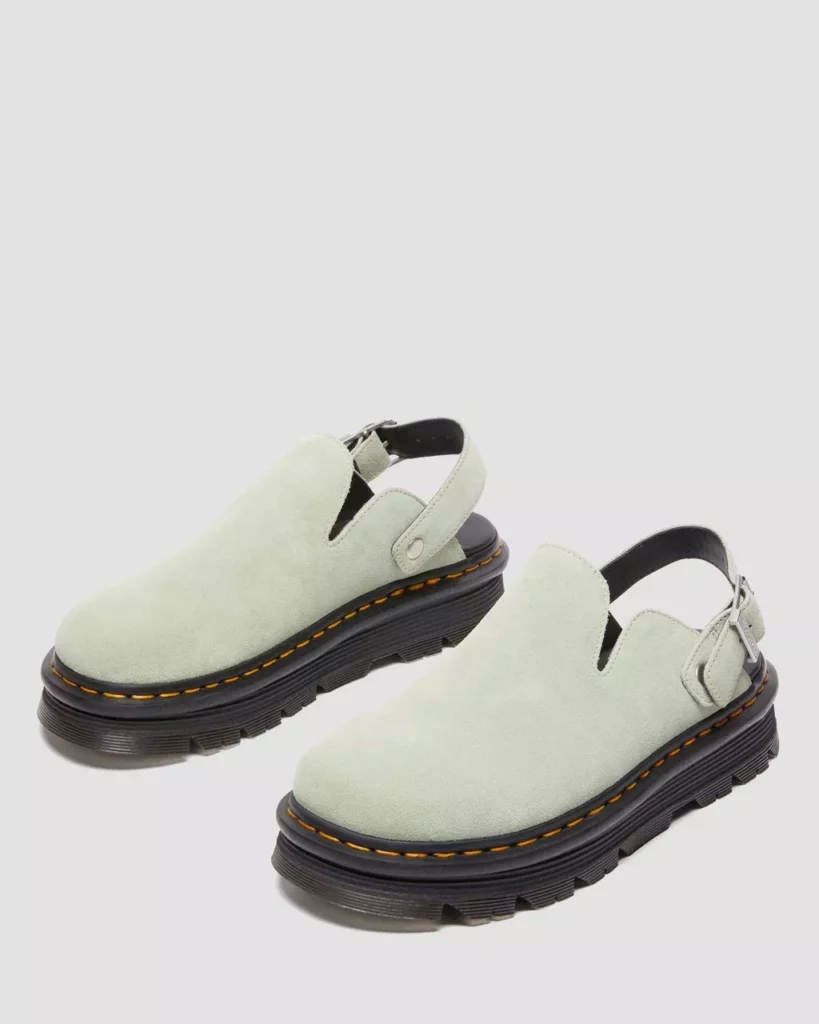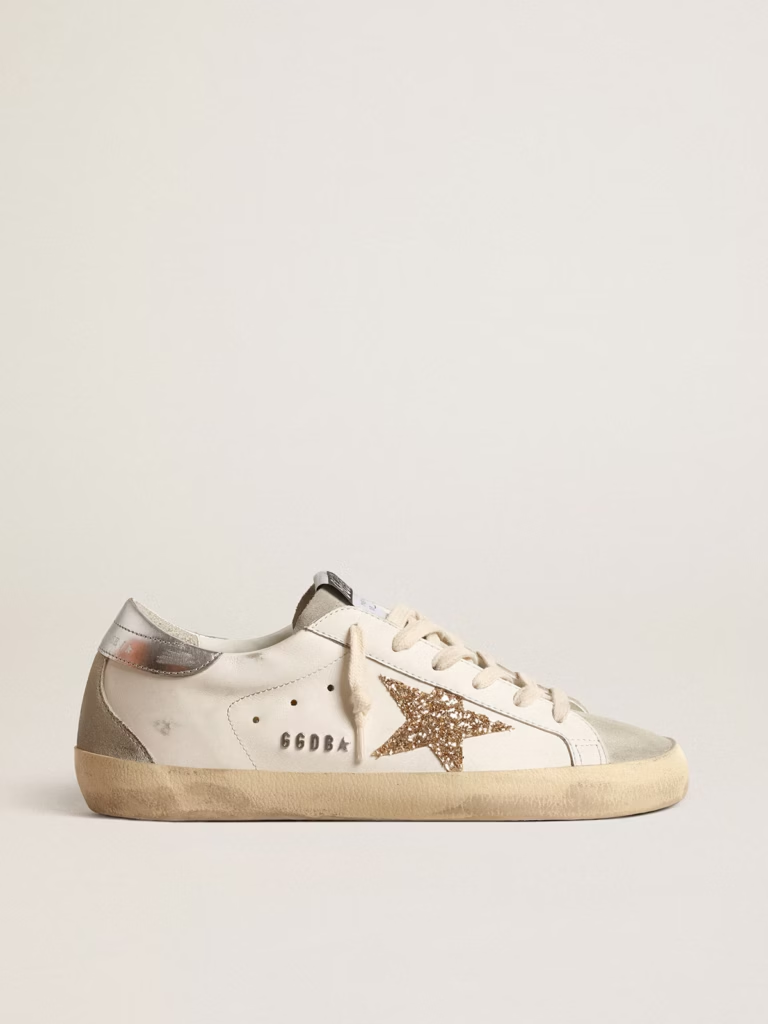Ask any cobbler, stylist, or leather nerd what separates beat-up boots from “still looks new” boots and you’ll hear one answer on repeat: cedar boot trees. This humble insert is not a luxury—it’s a tool. Pop a pair into your boots the moment you take them off and you’ll pull moisture out, smooth creases, keep the shaft upright, and neutralize odor before it starts. It’s the easiest, least fussy habit in boot care, and it directly extends the life of your leather.
In this guide, we’ll break down how cedar works, the difference between boot trees and regular shoe trees, how to size them correctly, what to do on wet days, and the five-minute routine that keeps your boots camera-ready for years. We’ll use Men’s Cedar Boot Tree as our reference point throughout.
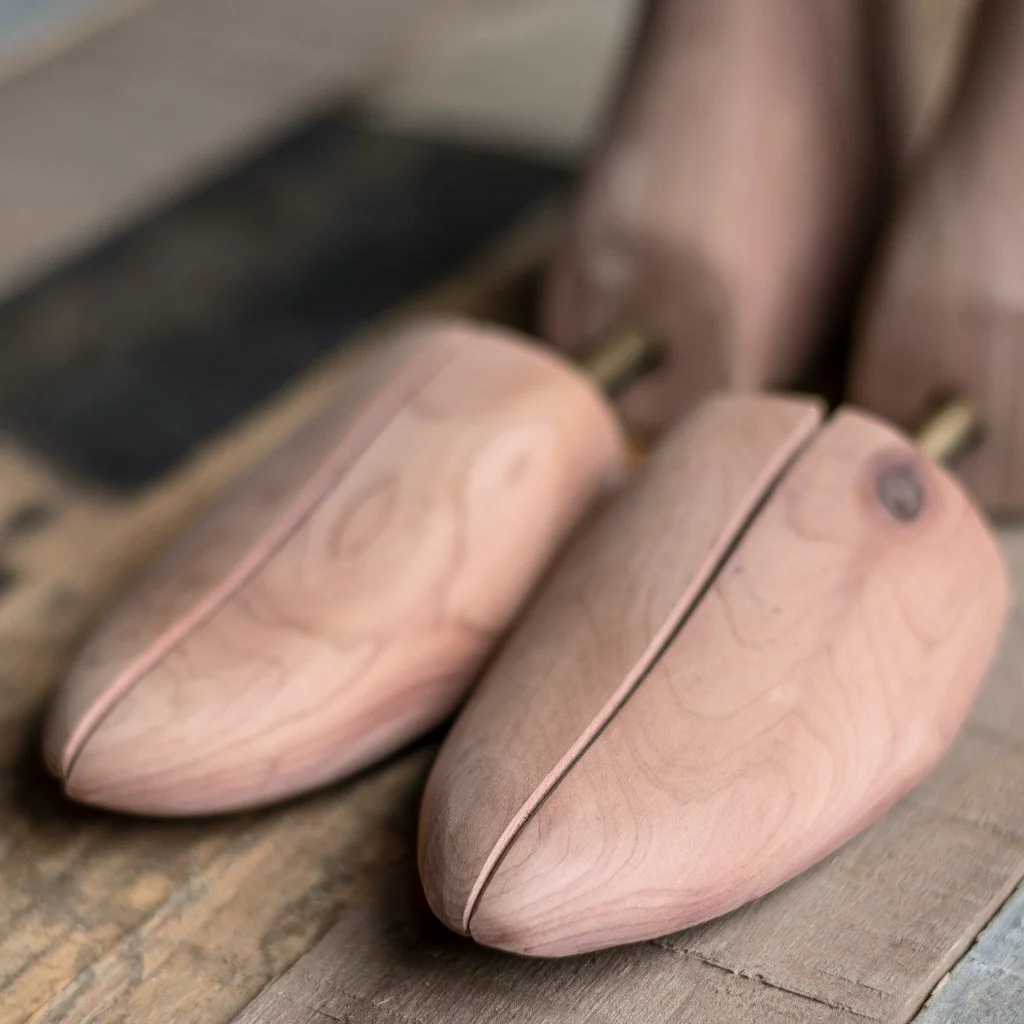
Why Cedar (and Why It’s Better Than Plastic)
Cedar earns its reputation for four reasons:
- Moisture absorption. Leather is skin; it drinks sweat and rain. Cedar is naturally porous, wicking away moisture from the insole and vamp so leather doesn’t dry into deep set creases.
- Odor control. Aromatic eastern red cedar (the classic pinkish wood with streaks) contains natural oils that neutralize funk. You’ll notice it especially after long days or sockless tries.
- Shape retention. A properly sized boot tree keeps the toe box full and the vamp smooth while the boot rests, preventing “cave-in” at the toe and accordion creases near the ball of the foot.
- Pest & mildew resistance. Cedar’s aroma does more than smell nice—it discourages mildew in dark closets and helps deter pests that love organic materials.
Plastic trees can help with shape in a pinch, but they don’t breathe. If you love your boots, cedar > plastic. Full stop.
Boot Trees vs. Shoe Trees (Yes, There’s a Difference)
Shoe trees are designed for low-cut profiles (derbies, loafers). Boot trees extend higher and are shaped to support the vamp and the first portion of the shaft, which keeps the collar from collapsing. For heritage, work, or Chelsea boots with taller shafts, that extra support matters: it prevents the “slouch fold” that distorts ankle fit over time and keeps heel counters from deforming.
Split-toe boot trees (two-piece front with a spreader) adapt to width variations across lasts. If your boots are narrow or EEE-wide, split-toe is the most forgiving shape.
The Fit Formula: How to Size Boot Trees Without Guesswork
The mantra is snug, not jammed. You want gentle tension that smooths the vamp and fills the toe without forcing the leather wider or longer. Use this quick logic:
- If you’re between sizes, go down for trees. Cedar expands slightly with humidity, and a too-large tree can stress stitching.
- If the boot is narrow/low-volume, favor a split-toe design; it will adjust without bowing the upper.
- When inserted, the front should meet the toe box; the heel block should seat flat in the counter; and the spring bar should engage—but you shouldn’t have to wrestle it.
Pro tip: insert the tree while the boot is still warm from wear. Leather is more pliable then, and the tree can “set” the shape as it dries.
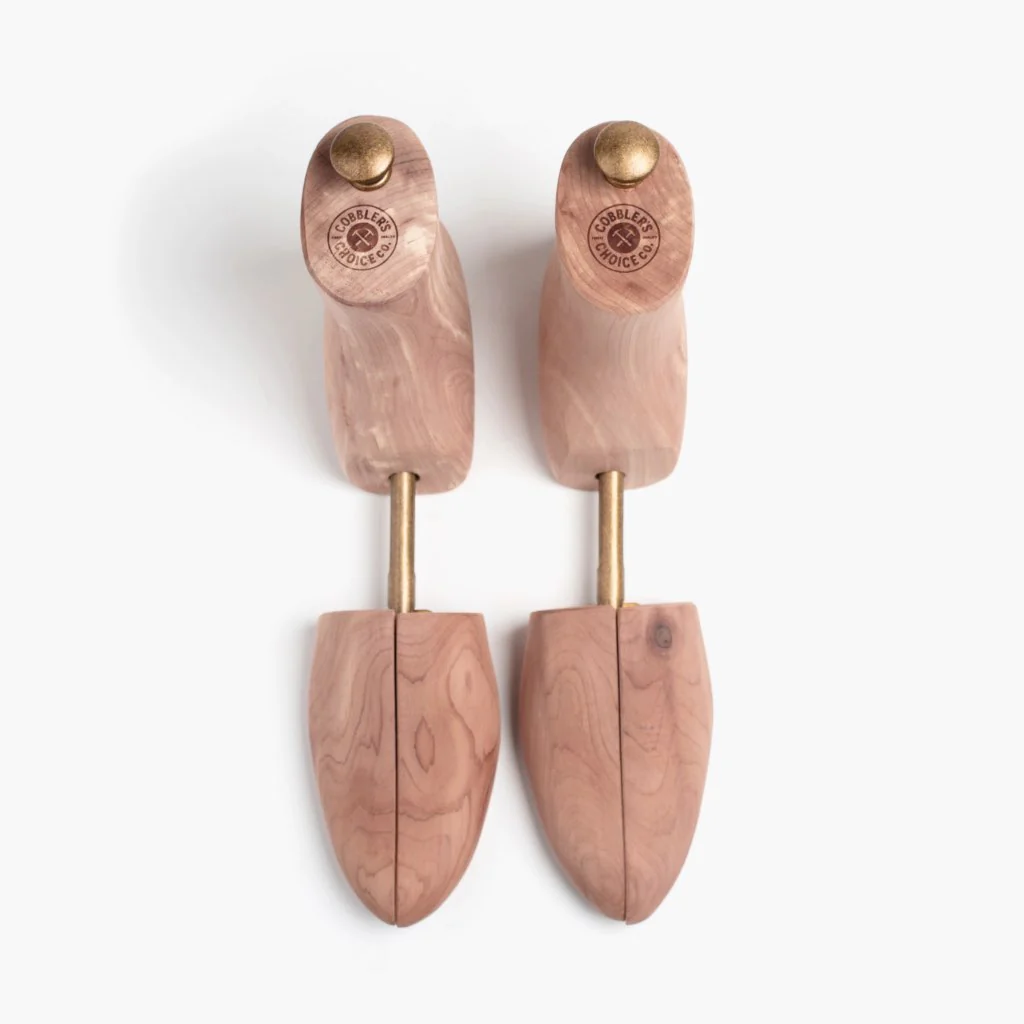
The Two Times You Must Use Them
- Right after wear (daily habit). Slide in trees within 5–10 minutes of taking boots off. This captures residual heat and moisture, smoothing the vamp as the boot cools and dries to neutral.
- During storage (off-season). If you rotate boots seasonally, keep trees in for the first 48–72 hours after the final wear to pull out deep moisture, then re-insert them at least a day per week or anytime you notice the collar collapsing.
If space is tight, prioritize your most expensive or most frequently worn pair for “always-on” trees; the rest can rotate.
Moisture Management: Wet Days, Sweat, and Salt Lines
- Rain or snow? Blot the uppers with a towel, remove the insoles if they’re soaked, and insert trees partway for the first hour to allow airflow; then seat fully. Never place sopping-wet boots on a heater—rapid drying leads to salt lines and cracks.
- Heavy sweaters: Cedar helps, but you still need an overnight dry. If boots feel damp in the morning, give them another day and rotate pairs; leather longevity loves patience.
- Salt stains: After drying, wipe with a damp cloth (distilled water if you have it). Condition later—only after the leather is fully dry and relaxed on the trees.
Boot Shape: What Trees Actually Support
- Toe box: Prevents caving and preserves last shape (especially important for structured toes and cap-toes).
- Vamp: Smooths flex lines so creases don’t “set” into sharp ridges.
- Quarter & collar: Boot trees with higher heels keep the collar upright, protecting heel counters and pull loops.
- Insole & welt: Even pressure helps the cork (in many Goodyear-welted builds) settle evenly over time, supporting comfort and longevity.
The 5-Minute Daily Boot-Care Routine (Zero Excuses)
- Brush (30 sec): Quick horsehair brush to knock off grit.
- Insert trees (10 sec): Warm leather + cedar = crease control.
- Wipe soles (30 sec): Paper towel on outsoles; road salts are sneaky.
- Glove buff (60 sec): Light cotton cloth over the toe and vamp to keep a soft sheen.
- Spot check (90 sec): If leather looks dull or taut, pencil a reminder to condition this weekend.
That’s it. Do this and you’ll need fewer deep cleans and less conditioner overall.
Shop Men’s Cedar Boot Tree: Shop Men’s Cedar Boot Tree
Travel & Storage: Real-World Tips
- Travel: If you must pack boots warm, insert the trees for the first hour at the hotel, remove to save space, then reinsert overnight. For carry-on weight, a single set rotates between pairs.
- Closet: Keep boots on trees in a cool, dry space. Avoid plastic dust bags that trap humidity; breathable cotton is better.
- Off-season: Condition, insert trees 48–72 hours, then store with trees in for the first month. Reinsert monthly to refresh shape and aroma.
Care for Your Cedar (Yes, the Trees Need Love Too)
Cedar’s aroma fades as it pulls moisture and oils. Every few months, lightly sand the surface (fine-grit sandpaper) to reopen pores and refresh scent. Wipe off dust and they’re as good as new. Avoid oils or polishes on cedar—those block absorption.
Hybrid Block — Quick Buyer’s Checklist (Bullets + Guidance)
- Material: Aromatic eastern red cedar (not painted or sealed).
- Shape: Split-toe for adjustability; full last if you want more aggressive crease smoothing.
- Spring strength: Firm enough to hold, not so strong you’re fighting it.
- Heel block: Broad, shaped to sit flat in the counter—prevents collar collapse.
- Size logic: Match boot size; if between sizes, go down.
- Use case: Daily rotation, wet weather, off-season storage.
Myths, Debunked
- “Trees stretch boots.” Not if they fit. Trees maintain shape; they’re not stretchers. (Stretchers are different tools.)
- “I only need them in dress shoes.” Casual leather creases too—and road salt, sweat, and rain don’t discriminate.
- “Plastic works the same.” For moisture? No. Plastic can trap sweat; cedar draws it out.
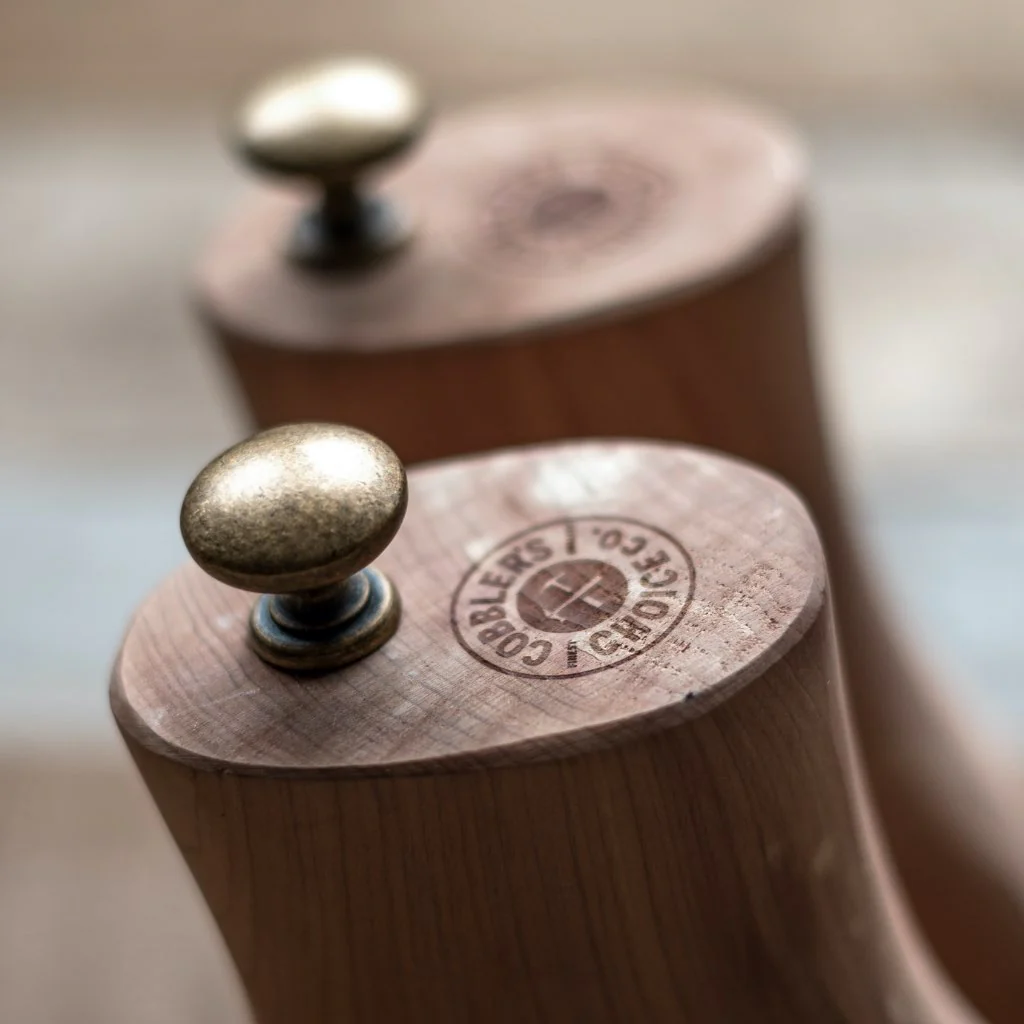
Pairing Boot Trees with a Full Care Kit
For best results, combine trees with:
- Horsehair brush (daily dust-off).
- Cleaner/conditioner (monthly or as needed).
- Edge dressing (seasonal polish for welt/heels).
- Weatherproofing (wax or spray appropriate for your leather type).
Trees make each of those steps more effective by keeping the boot’s structure stable.
Troubleshooting: If Something Feels Off
- Hard to insert? Size down or switch to split-toe. For first insertion after wet wear, seat the toe, let air circulate 30–60 minutes, then engage the heel.
- Heel pops out? Spring may be too strong or tree too long. You want contact, not torque.
- Persistent odor? Sand the cedar lightly; consider rotating socks/insoles; give boots a full 24-hour dry time.
- Deep crease won’t relax? Trees minimize new creasing; add a touch of conditioner and time. Don’t steam or soak leather.
Conclusion
A great pair of boots can last a decade; Men’s Cedar Boot Trees help them look good the whole time. Cedar draws out sweat, resets the vamp, props the collar, and keeps odor to a minimum—all while preserving the last’s original lines. Size them snug (never forced), insert them while the leather is warm, and make them the non-negotiable first step after every wear. Pair that habit with a brush-and-buff routine and seasonal conditioning, and your boots will pay you back in longevity, comfort, and that quietly polished look only well-kept leather delivers.
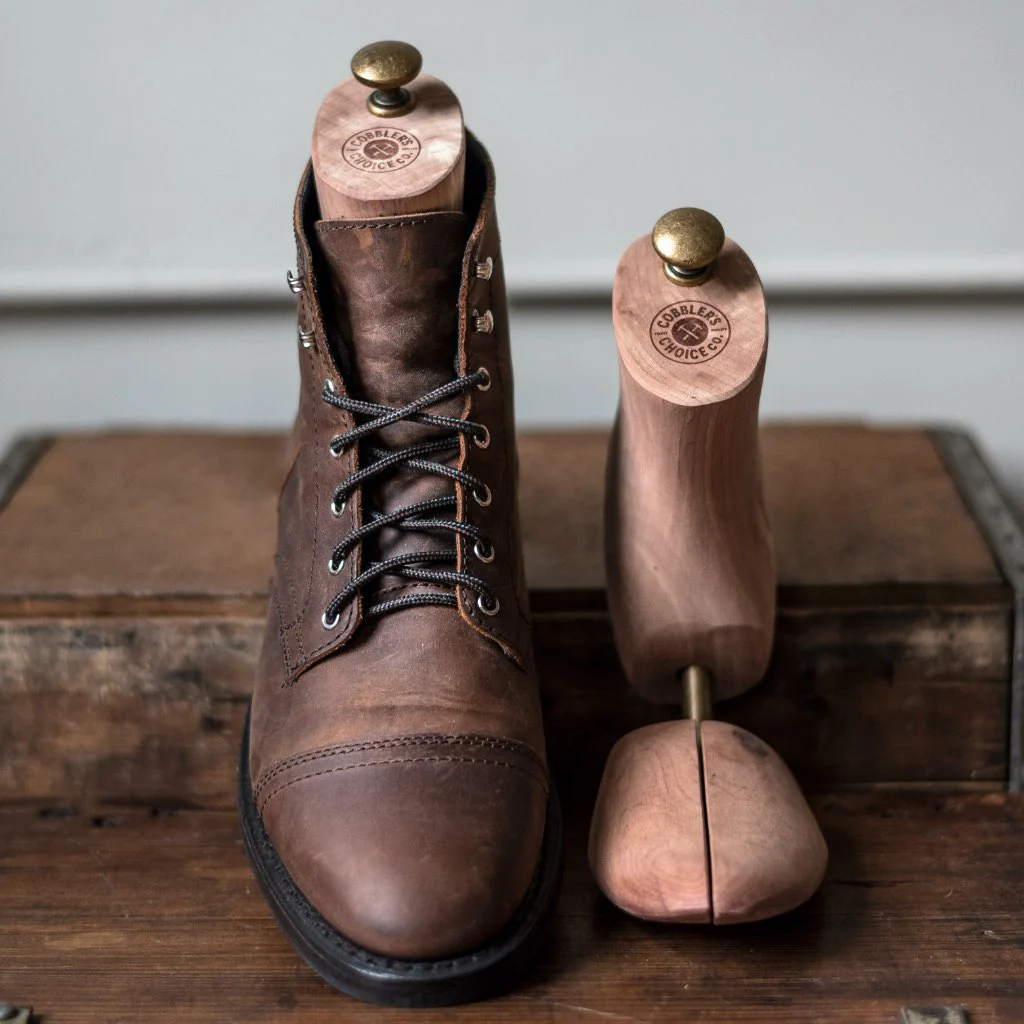
FAQ
- How long should I leave cedar boot trees in after wear?
For daily rotation, insert immediately and leave overnight. If the boots got wet, let them air 30–60 minutes, then seat the trees fully and leave 24 hours. - Do boot trees stretch leather?
No. Properly sized trees preserve shape; they don’t function as stretchers. If you need more room, use a dedicated stretching tool. - What’s the difference between shoe trees and boot trees?
Boot trees support a taller profile, helping the collar and heel counter stay upright—critical for ankle fit and pull loops. - How do I refresh the cedar scent?
Lightly sand the surface with fine-grit sandpaper every few months. This reopens pores and boosts aroma and absorption. - Can I use them in suede boots?
Absolutely. Cedar helps suede dry evenly and maintain structure. Brush suede with a dedicated suede brush after drying. - What if my boots are wide/narrow?
Choose split-toe boot trees; they adapt to width and instep height without over-pressuring the leather. - Should I keep trees in during off-season storage?
Yes—especially for the first few weeks. After that, reinsert periodically to maintain shape and control humidity. - Plastic vs. cedar—ever a reason to choose plastic?
Only for ultralight travel. Plastic won’t absorb moisture or odor, so swap back to cedar at home. - Do I still need conditioner if I use trees?
Yes. Trees manage shape and moisture today; conditioning nourishes leather for the long haul. Use as needed based on climate and wear.

